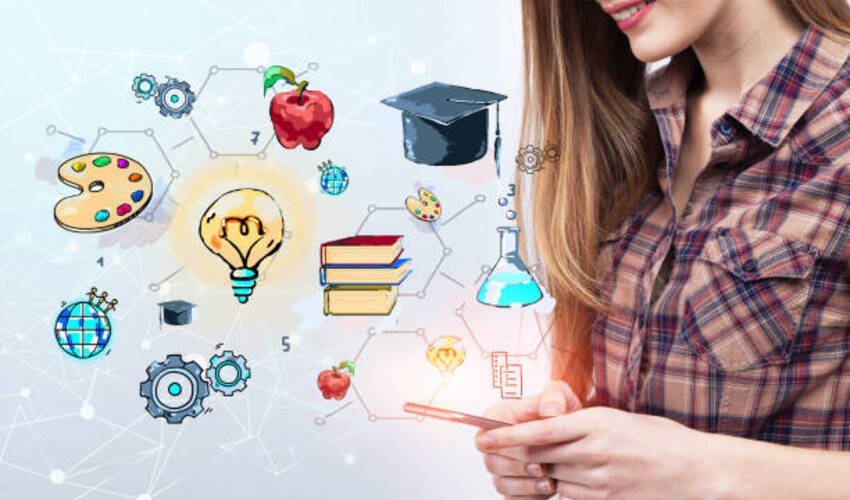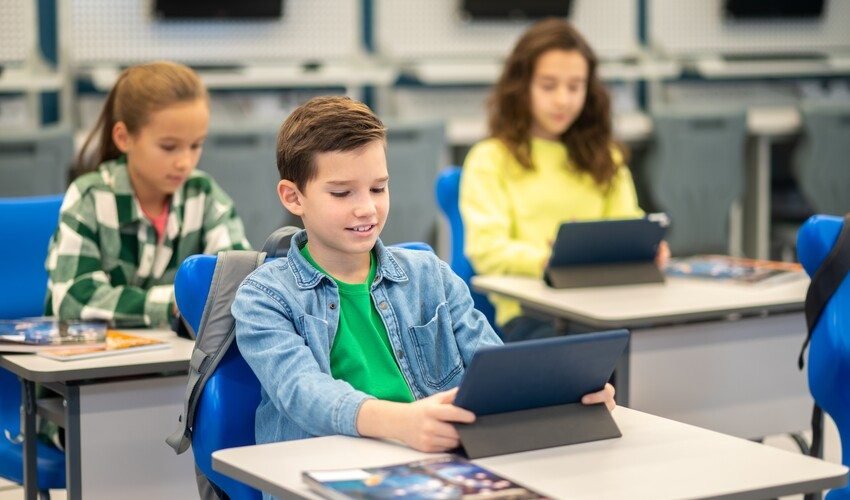Introduction: Education and the Young Population in Developing Countries
The populations of developing countries are overwhelmingly young. There are at least 30% of kids (under-14) living in India. The scope of education in India is very low compared to other developing countries. In India, so many kids are found who do not have access to education or other knowledge about the nation.
This factor creates a big gap between the education system and young people. To fulfill this gap, technology creates a bridge by providing an age-agnostic result to the aggravated learners. Technology brings a change to people so that they can absorb any type of knowledge with the help of technical devices using an Internet connection.
The Role of Technology in Bridging the Education Gap
A student can access any type of information from anywhere; there is no need to stay at a particular place. You can take advantage of these technical devices—when you are talking with another person, when you are walking on the road or ground, or while traveling, etc.
Some of the most popular technical devices are smartphones, laptops, PCs, home computers, and tablets. These are very helpful for any person. The evolution of these tools has revolutionized access to information, making education more flexible, inclusive, and convenient for everyone, regardless of geographical barriers.
The Growth of Mobile Learning in the Modern Era
Today, mobile learning is very popular in the era of technology. At least 6 billion people have access to these devices by using an Internet connection. People can use these mobile devices very easily, just like a computer system. They can access any type of information instantly and interactively.
Thus, this technology (Mobile Learning) is changing the way we live. Mobile learning helps people of all ages to continue their education anywhere and anytime, supporting both formal and informal learning environments.
UNESCO’s Role in Promoting Mobile Learning
To enhance the use of mobile learning, UNESCO is providing help to governments and individuals so that they can all use mobile devices for accessing information or to complete their educational goals.
UNESCO recognizes that mobile technology can be an effective tool in bridging educational gaps, especially in rural or underdeveloped areas where traditional schooling systems may not reach. By promoting digital literacy and equitable access to technology, organizations like UNESCO encourage nations to integrate mobile learning into their educational strategies.
Definition and Features of Mobile Learning
Thus, mobile learning involves the use of mobile technology to enable the learning process anywhere and anytime. In the modern era of technology, learning can open out in various ways, such as allowing people to utilize mobile devices to connect with others, to create and share content, and to access educational resources with ease.
Mobile learning supports diverse educational activities, from virtual classrooms and e-books to interactive assignments and global collaboration platforms.
Educational Benefits of Mobile Learning
The learning process through mobile learning enhances a broad range of educational goals, like improving communication among families and schools, facilitating effective use of school administration systems, and promoting student engagement and motivation. Teachers and parents can stay in touch more efficiently through digital communication tools, while students benefit from real-time feedback and access to online academic support. Mobile learning also fosters creativity and self-paced study, helping students build independent learning habits that are vital in today’s knowledge-driven world.
Convenience and Accessibility through Mobile Devices
As we know that technology has completely changed our lives, so many big assignments or projects given by college tutors can also be done by accessing information with the help of mobile devices.
Mobile devices are very small in size compared to other devices, so anyone can easily carry them from one place to another. There is no longer a need to carry a heavy laptop during study sessions or travel. Students can send their requests through mobile devices and can get solutions within a limited time.
There is no requirement for any extra time or location restrictions. This convenience and portability make mobile learning a powerful method to increase productivity and engagement among learners.
Homework Help and Online Learning Support
Homework Help provides a way where us can access any type of solution related to our problem. It has a huge amount of data, so there is no need to go anywhere else. Online platforms such as Homework Help play a crucial role in supporting mobile learning by offering accessible resources, expert guidance, and interactive tools.
With just a mobile phone and an Internet connection, students can connect with professional tutors, explore comprehensive databases, and get answers instantly.
Role of Online Tutors and Assignment Services
Thus, Homework Help has an excellent team of writers who are creative, very proficient, and outstandingly accomplished in writing all types of assignments provided for students. It helps to fulfill all the requirements of students—whatever they need in writing, they are ready at all times to provide the best assignments.
Among all other types of assignment writing companies, Homework Help stands first in the row. The writers on this site provide their full assistance to students so that they can gain good marks in their assignments or projects.
Online tutors always give complete solutions according to the requirements, and they are available all the time, so you can access information anytime. This 24/7 accessibility reflects one of the most powerful features of mobile learning—it removes time and space barriers to education.
Conclusion: The Future of Mobile Learning
In conclusion, mobile learning has become a transformative force in education. It not only makes education more accessible and affordable but also personalizes the learning experience. With mobile devices, students are no longer limited to classrooms or textbooks; instead, they can learn interactively and collaboratively.
The populations of developing countries, especially India, can benefit immensely from mobile learning to bridge the gap between the education system and young learners. Technology, therefore, serves as a bridge between opportunity and potential, ensuring that learning truly becomes a lifelong, borderless experience for everyone.
Read Dive is a leading technology blog focusing on different domains like Blockchain, AI, Chatbot, Fintech, Health Tech, Software Development and Testing. For guest blogging, please feel free to contact at readdive@gmail.com.





